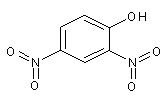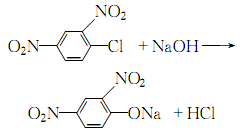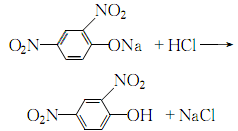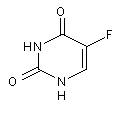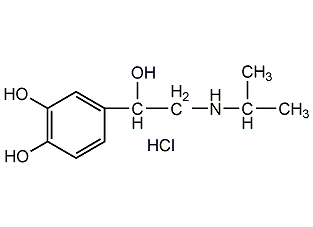
Structural formula
| Business number | 014N |
|---|---|
| Molecular formula | C11H17NO3HCl |
| Molecular weight | 247.72 |
| label |
Isoproterenol hydrochloride, 4-[(2-Isopropylamino-1-hydroxy)ethyl]-1,2-benzenediol hydrochloride, (±)-Isoproterenol hydrochloride, N-Isopropyl-DL-noradrenaline hydrochloride, 1-(3′,4′-Dihydroxyphenyl)-2-isopropylaminoethanol hydrochloride |
Numbering system
CAS number:51-30-9
MDL number:MFCD00012603
EINECS number:200-089-8
RTECS number:DO1925000
BRN number:3917363
PubChem number:24277780
Physical property data
1. Appearance: white powder
2. Density (g/mL, 25/4?): Undetermined
3. Relative vapor density (g/mL, air =1): Undetermined
4. Melting point (ºC): Undetermined
5. Boiling point (ºC, normal pressure): Undetermined
6. Boiling point (ºC, 5.2kPa): Not determined
7. Refractive index: Not determined
8. Flash point (ºC): Not determined
9. Specific rotation (º): Undetermined
10. Autoignition point or ignition temperature (ºC): Undetermined
11. Vapor pressure (kPa, 25ºC): Undetermined
12. Saturated vapor pressure (kPa, 60ºC): Undetermined
13. Heat of combustion (KJ/mol): Undetermined
14. Critical temperature ( ºC): Undetermined
15. Critical pressure (KPa): Undetermined
16. Log value of oil-water (octanol/water) partition coefficient: Undetermined
17. Explosion upper limit (%, V/V): Undetermined
18. Explosion lower limit (%, V/V): Undetermined
19. Solubility: Undetermined
Toxicological data
None
Ecological data
None
Molecular structure data
1. Molar refractive index: 58.55
2. Molar volume (cm3/mol): 176.0
3. Isotonic specific volume (90.2K ): 473.9
4. Surface tension (dyne/cm): 52.5
5. Polarizability (10-24cm3): 52.5
Compute chemical data
1. Reference value for hydrophobic parameter calculation (XlogP): None
2. Number of hydrogen bond donors: 5
3. Number of hydrogen bond acceptors: 4
4. Number of rotatable chemical bonds: 4
5. Number of tautomers: 10
6. Topological molecule polar surface area 72.7
7. Number of heavy atoms: 16
8.Surface charge: 0
9. Complexity: 187
10. Number of isotope atoms: 0
11. Determine the number of atomic stereocenters: 0
12. Uncertain number of atomic stereocenters: 1
13. Determined number of chemical bond stereocenters: 0
14. Uncertain number of chemical bond stereocenters :0
15. Number of covalent bond units: 2
Properties and stability
None
Storage method
This product should be sealed and stored in a cool, dark place.
Synthesis method
Made with catechol as raw material
Purpose
It can relax bronchial smooth muscle, strengthen heart contraction and improve heart block. It is used to treat bronchial asthma, cardiac arrest, atrioventricular conduction block and poisoning shock. It is contraindicated in patients with angina pectoris, myocardial infarction, and hyperthyroidism.
extended-reading:https://www.bdmaee.net/dibutyltin-dibenzoate/extended-reading:https://www.cyclohexylamine.net/nn-dimethylcyclohexylamine/extended-reading:https://www.newtopchem.com/archives/42953extended-reading:https://www.bdmaee.net/cas-683-18-1-2/extended-reading:https://www.newtopchem.com/archives/44629extended-reading:https://www.bdmaee.net/catalyst-1028-catalyst-1028-polyurethane-catalyst-1028/extended-reading:https://www.newtopchem.com/archives/44359extended-reading:https://www.cyclohexylamine.net/catalyst-dabco-8154-acid-blocked-tertiary-amine-catalyst/extended-reading:https://www.newtopchem.com/archives/category/products/page/143extended-reading:https://www.bdmaee.net/nt-cat-la-404-catalyst-cas1066-33-4-newtopchem/

